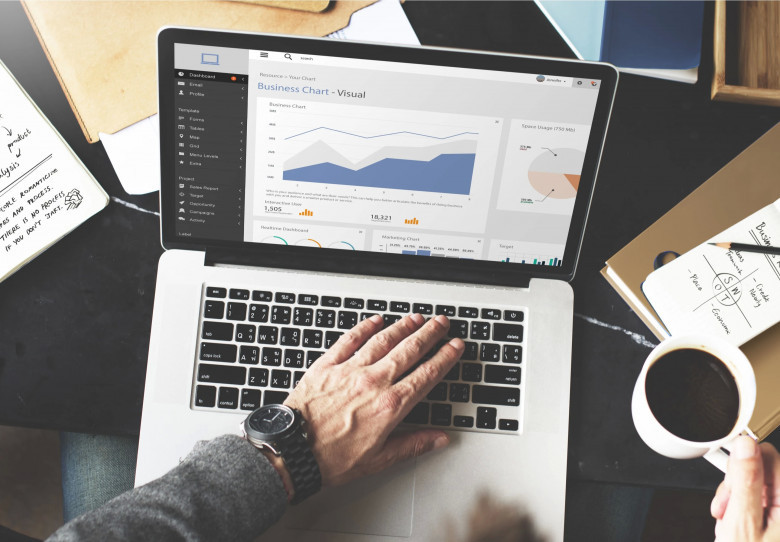views

Top 9 Data Analytics Tools for 2022

Over the years, there has been a significant rise in the amount of data produced each day, now approaching 2.5 quintillion bytes. Making crucial business decisions, gaining knowledge, and offering data-based solutions greatly benefit from this data. This data is regularly used by data analysts, which led to the development of data analytics. Data analytics is used in a variety of industries, including media, commerce, and finance. Several data analytics tools are available today to help with the problem of transforming raw data into useful information for data analysis projects. Making business decisions using data-driven analysis may require the information.
Top 9 Tools for Data Analytics:
-
R Programming:
One of the most widely used statistical modeling, data analysis, and visualization languages is R. It is an open-source programming language. It excels at data analysis and visualization with tools like ggplot2, lattice, plotly, and others. Additionally, a sizable development community is available for support.
R was developed at the University of Auckland by Ross Ihaka and Robert Gentleman and is open-source and free to use. The R Development Core Team is actively working on it. The two founders, whose names both begin with the letter R, inspired the name "R" for the programming language.
-
Python:
One of the most effective data analytics tools available to users is Python. There are numerous packages and libraries included. Python is a free, open-source program with packages like Matplotlib and Seaborn and can be used for sophisticated visualization. One of the most popular data analytics libraries included with Python is called Pandas. Python is the first programming language that the majority of programmers choose to learn since it is simple and flexible. It is a high-level, object-oriented programming language.
-
Excel:
Microsoft Excel is a straightforward but effective application for gathering and analyzing data. It is easily accessible, often utilized, and a part of the Microsoft Office toolkit. For data analysis, Microsoft Excel can be thought of as a wonderful place to start. Excel's Data Analytics Toolset provides a range of possibilities to do statistical analysis on your data. Excel's graphs and charts provide a clear understanding and visual representation of your data.
Many online data analytics courses are available to help you master Excel for data analysis.
-
Tableau:
Data analysts use Tableau, a business intelligence tool, to view, examine, and comprehend their data. Tableau offers quick analytics and can investigate various data sources, including databases, spreadsheets, Hadoop data, and cloud services. Due to its robust GUI, it is simple to use. It requires less work to create excellent interactive dashboards. With Tableau, a market leader, you can deal with real data without spending too much time on data manipulation.
-
QlikView:
QlikView is a self-service platform for business intelligence, data visualization, and data analytics. It offers capabilities like Data Integration, Data Literacy, and Data Analytics to expedite the business value that can be obtained from data. It provides a range of items to its consumers, some of which can be tried out for free for a month. QlikView is used by over 50,000 customers globally.
Fast decision-making is made easier, and there are several capabilities for ad hoc queries. There are no data volume restrictions, and it responds instantly. Making the best business decisions requires having access to information and trends, which QlikView can help you find. It is economical and cost-effective.
-
Power BI:
Microsoft's Power BI is yet another potent corporate analytics tool. You may connect to numerous data sources, visualize your data, and distribute the results around your company. Your data can come to life with Power BI's live dashboards and reports. Microsoft Excel and other data analytics tools can be connected with Power BI.
The following are some of the products offered by Power BI:
-
Desktop Power BI
-
Premium Power BI
-
Power BI Embedded and Power BI Pro
-
BI Power Mobile
-
Report Server for Power BI
-
SAS:
A statistical software package called SAS is frequently utilized for data administration and predictive analysis. SAS is a proprietary program that costs money for businesses to utilize. A free university edition is now available for students to use and study SAS. A basic GUI is present. Therefore, learning it is simple. Nevertheless, a solid understanding of SAS programming is a distinct benefit to using the tool. Ineffective data management and manipulation are assisted by SAS's DATA step (The data step is where data is created, imported, changed, merged, or calculated).
-
KNIME:
An open-source, cost-free platform for data analytics, reporting, and integration is called KNIME or Konstanz Information Miner. It is designed for analytics on a GUI workflow and aids in data collection and creating models required for production and deployment. The following free online courses might help you learn more about KNIME.
-
Apache Spark:
One of the most popular Apache projects is Spark. It has an interface that guarantees implicit data parallelism and is open-source. Spark is a framework that supports applications while preserving the fault tolerance and scalability of MapReduce. Spark technologies offer resilient distributed datasets (RDDs), a read-only collection of information divided among many devices to meet user needs.
Conclusion:
Small businesses can benefit from data analytics in a variety of ways. Businesses may make better judgments about how to price their goods and services and where to devote their resources by knowing data science. Data analytics can also assist organizations in identifying patterns and comprehending their clientele. You may make useful reports and dashboards by using data analytics software to track and analyze data. Explore the top data analytics tools with Learnbay’s data science course with placement if you're seeking a lucrative career in data science and analytics.












